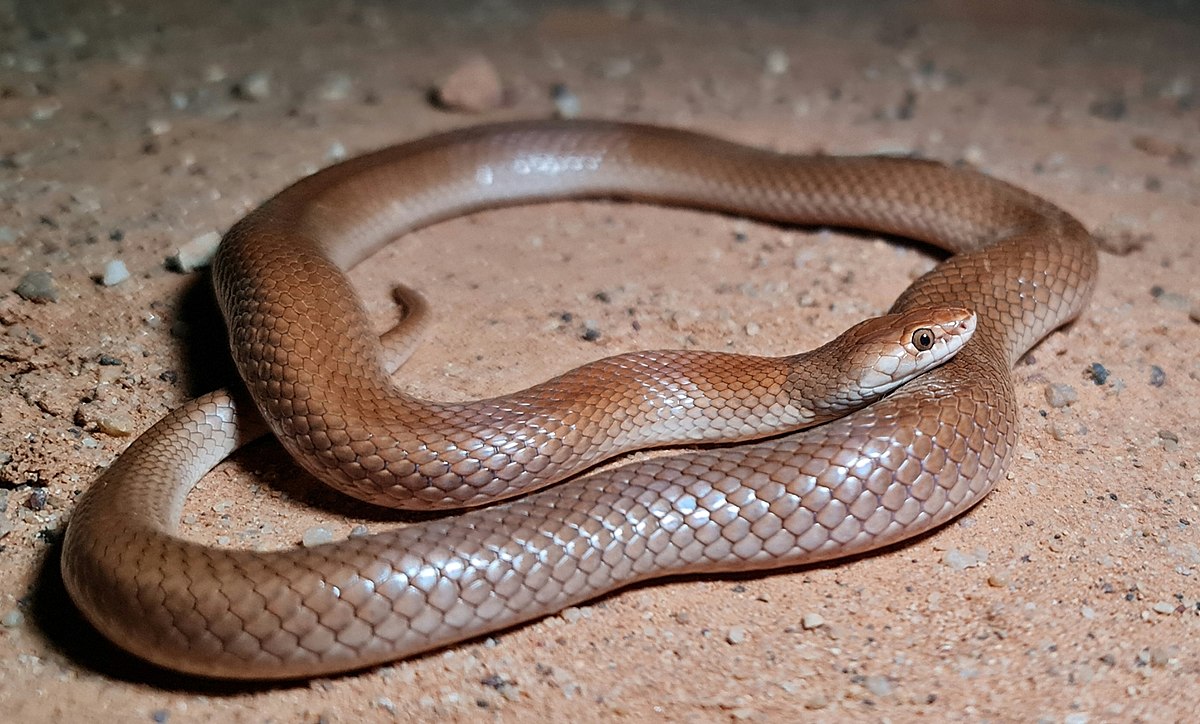
The Curl Snake, also known as the Ramsay’s Python, is an intriguing creature that captivates both snake enthusiasts and nature lovers alike. With its unique appearance and captivating behavior, this snake species has gained popularity among reptile enthusiasts around the world. In this article, we will delve into the fascinating world of Curl Snakes, uncovering 16 captivating facts about their morphology, habitat, behavior, and more. From their distinctive curled resting position to their ability to change color, these snakes are truly remarkable creatures. So, get ready to embark on a journey into the intriguing world of Curl Snakes and discover what makes them such an awe-inspiring species.
Key Takeaways:
- The Curl Snake is a non-venomous reptile with a unique defensive posture, making it a fascinating species to study and protect.
- With its nocturnal behavior, protective mothering, and cultural significance, the Curl Snake showcases remarkable adaptability and longevity in the wild.
Natural Habitat
The Curl Snake can be found in various habitats, including grasslands, woodlands, and scrublands.
Physical Appearance
The Curl Snake is a slender snake with a long body, ranging in length from 30 to 90 centimeters. It has a distinctive pattern of light and dark scales along its back.
Non-venomous
One of the most interesting facts about the Curl Snake is that it is non-venomous. Despite its fearsome appearance, it relies on its ability to constrict its prey.
Diet
The Curl Snake primarily feeds on small reptiles, amphibians, and rodents. It uses its powerful jaws to swallow its prey whole.
Nocturnal Behavior
The Curl Snake is primarily active during the night, using its excellent vision to hunt for food under the cover of darkness.
Unique Defensive Mechanism
When threatened, the Curl Snake assumes a distinctive defensive posture by curling its body into tight spirals. This behavior is the origin of its name.
Swift Swimmer
Contrary to popular belief, the Curl Snake is an accomplished swimmer. It can move efficiently through water to hunt for prey or escape from danger.
Protective Mother
Female Curl Snakes are known for their protective nature toward their eggs. They will coil around the eggs to ensure their safety until they hatch.
Camouflaging Abilities
The Curl Snake has the ability to blend in with its surroundings due to its coloration, making it difficult for predators to spot.
Long Lifespan
Curl Snakes have a relatively long lifespan for a snake species, with some individuals living up to 20 years in the wild.
Hibernation
During colder months, the Curl Snake goes into a hibernation-like state known as brumation. It seeks shelter in underground burrows or beneath rocks.
Indigenous Importance
The Curl Snake holds cultural significance for indigenous communities, who view it as a symbol of wisdom and spiritual energy.
Scent Marking
Male Curl Snakes use scent marking to establish territory and attract potential mates. They release pheromones to communicate with other snakes in their vicinity.
Adaptability
The Curl Snake is highly adaptable to various environments, allowing it to thrive in different regions across its range.
Distinctive Mating Rituals
During the mating season, male Curl Snakes engage in intricate courtship displays, involving elaborate movements and body contortions.
Conservation Status
The Curl Snake is currently listed as a species of least concern on the IUCN Red List. However, habitat degradation and loss pose ongoing threats to its population.
These 16 fascinating facts about the Curl Snake showcase its remarkable attributes and highlight why it is an intriguing species worth studying and protecting.
Conclusion
The Curl Snake is truly a fascinating creature, with its unique characteristics and behaviors. From its ability to curl up into a tight coil to its remarkable adaptation to various environments, this snake has captivated the attention of researchers and reptile enthusiasts alike.
As one of the most widespread snake species in Australia, the Curl Snake plays an important ecological role by controlling the populations of small rodents and reptiles. It’s also interesting to note that this snake is harmless to humans, making it a valuable member of the ecosystem.
Whether you’re studying reptiles or simply curious about the animal kingdom, learning about the Curl Snake will undoubtedly expand your knowledge and appreciation for the diverse species that inhabit our planet.
FAQs
Q: Are Curl Snakes venomous?
A: No, Curl Snakes are non-venomous and pose no threat to humans.
Q: What is the average size of a Curl Snake?
A: The average size of a Curl Snake ranges from 80 to 150 centimeters, with females usually being larger than males.
Q: What do Curl Snakes feed on?
A: Curl Snakes primarily feed on small rodents, lizards, and other reptiles.
Q: Where can Curl Snakes be found?
A: Curl Snakes can be found throughout Australia, inhabiting a wide range of environments, including woodlands, grasslands, and deserts.
Q: How do Curl Snakes defend themselves?
A: When threatened, Curl Snakes will curl up into a tight coil and produce a loud hissing sound to intimidate predators.
Q: Do Curl Snakes lay eggs or give live birth?
A: Curl Snakes are oviparous, which means they lay eggs. The females will incubate the eggs until they hatch.
Q: How long do Curl Snakes live?
A: On average, Curl Snakes have a lifespan of about 10 to 15 years in the wild.
Q: Are Curl Snakes aggressive towards humans?
A: No, Curl Snakes are generally shy and will try to avoid human contact whenever possible.
Q: Are Curl Snakes protected by law?
A: Curl Snakes are not specifically protected by law in Australia, but they are considered a valuable part of the ecosystem and are generally respected and appreciated.
Q: Can Curl Snakes be kept as pets?
A: While some people may choose to keep Curl Snakes as pets, it’s important to research and understand their specific needs before considering them as a pet. It is generally recommended to leave them in their natural environments.
Curl Snakes are just one example of nature's incredible diversity. If you're curious about animal behavior, want to explore the fascinating field of herpetology, or learn about another intriguing snake species like the Steppe Viper, keep reading! There's always more to discover in the world of wildlife, from the tiniest insects to the mightiest mammals. So why not satisfy your curiosity and expand your knowledge by diving into these captivating topics next?
Was this page helpful?
Our commitment to delivering trustworthy and engaging content is at the heart of what we do. Each fact on our site is contributed by real users like you, bringing a wealth of diverse insights and information. To ensure the highest standards of accuracy and reliability, our dedicated editors meticulously review each submission. This process guarantees that the facts we share are not only fascinating but also credible. Trust in our commitment to quality and authenticity as you explore and learn with us.


